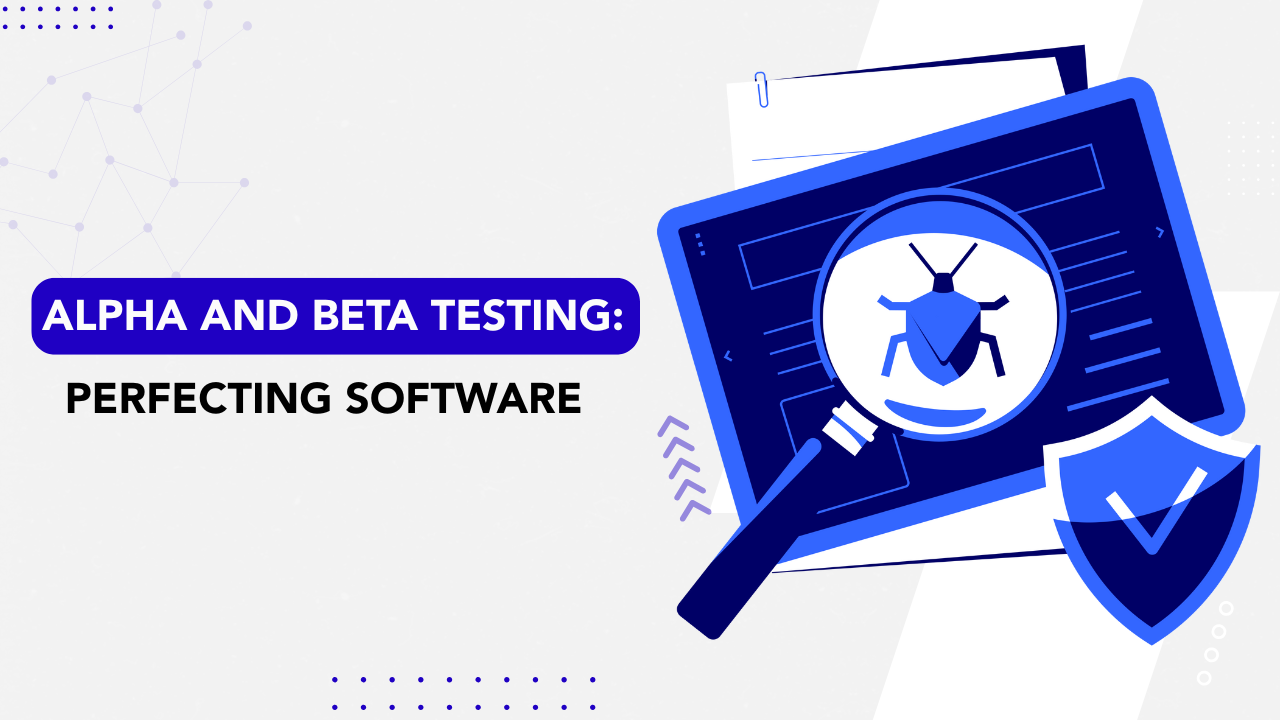
by admin | Nov 6, 2019 | Software Testing, Fixed, Blog |
With time there have been newer technologies that are aimed at speeding up processes and customer demands have kept up with this pace, leading to expectations of higher quality software /applications in shorter timeframes. Customers are spoiled for choices and hence are unwilling to settle for anything less, making it critical for companies to adapt and improve and deliver high-quality solutions faster in order to maintain an edge. As a leading QA company we understand the need to maintain a fine balance between top quality and speedy release of the software – no compromises on either side.
We have been in business long enough and have helped a large number of customers to know the kind of challenges a continuous software delivery model poses, but we also have the solutions. For high-quality software and speedy delivery, it is necessary to follow some guidelines, simplify processes, use the right tools, and constantly upgrade skills – which is why we today are amongst the best QA companies. Let us look at how to create top-quality software with the speedy release – non-compromisingly!

Keeping Track Across the Development Lifecycle
Traceability is necessary for tracking the development lifecycle and to achieve regulatory compliance – helps to make faster and better decisions. The correct tools would ensure that QA advisors / experts would be able to manage the development feature backlog and to run automated tests. Using several tools can often be beyond the expertise of product owners, and hence can be a cumbersome and time-consuming process. As experts, we understand and are able to use a consolidated tool to improve both efficiency and accuracy of testing, while ensuring a high-quality product with a timely release.
It is not feasible or required to test every aspect before a release, but in order to be confident of the quality, testers must focus on the areas of the code where the most important changes were made. As experts, we understand the importance of learning from the product owner’s perspective, and our team completely understands which portions of the product will have new or updated code – this helps to prioritize tests. It makes sense to base the release criteria on newly added code.
Making Data Usage the Focus for Fixing Bugs
Removing bugs is one of the prime aspects of testing and achieving top quality, but it is important for testers to focus their efforts on bugs depending on usage data. This means analyzing which part of the application is used most and sorting out those issues first. However, this does not mean ignoring the rarely used portions, since they too could have bugs that could eventually create usage issues and lower the performance of the application.
Test Automation with a Double tier Methodology
The first tier for test automation is running sanity tests that are completed quickly and help to provide validation of changes by the developer. The second tier would run the more intense and comprehensive regression tests on automatic mode and experts would know how to get the balance right. Regression tests must be run in the final phase of product stabilization, which would be the go signal for production, and it would make sense to automate the regression cycle.
Meticulous Monitoring and Reporting System
Robust monitoring will throw up real-time feedback on any possible issues, allowing those working on the products to resolve defects faster. With a faster resolution of defects and issues, the team would be able to consistently create high-quality products in shorter timeframes.
Conducting Sanity Tests on Production
It is important to run post-release sanity tests in order to verify that all is working as required and expected. This will also save time and prevent any product from being released if it is not in ‘prime’ condition.
In Conclusion
As experts in QA engineering, we have seen a significant change in the way QA is performed and in the expectations of customers. We have kept pace with the changes and with the demand for frequent and high-quality releases by breaking away from traditional roles and methods. It is important to ensure that QA testers develop new skills, and learn new techniques in order to shorten development cycles, produce high-quality software, and remain engaged in the line of work of QA testing. We have the capability to make software future-ready – the top quality and with speed – connect with us to get more from less.

by admin | Nov 28, 2019 | Software Testing, Fixed, Blog |
Let’s get one thing clear; smoke testing is nothing but build verification testing. It is a type of software testing that aims at ensuring the most critical functions work and comprises a non-exhaustive set of tests. We can decide if a build is stable enough to proceed with further testing from the results of a smoke test. It is a play on the word smoke, taken from hardware testing, where if a device didn’t catch fire, it passed the test.

It can cover some of the primary functions of the software but none in depth. It does, however, help in exposing integration and other significant issues early on in the testing cycle. It is performed manually or with automation tools and functions on both enhanced or newly created software. We should automate smoke testing for frequent builds. The addition of more functionalities makes an application mature, and the smoke test needs to be expanded to meet the requirement because a single error in the code can render it entirely useless. It is not a substitute for regression/functional testing.
Remember these tips to master smoke tests and get optimum results for your business.
- Use it during the early stages of your project.
- Record all of them, and they should be less than 60 minutes.
- Conduct one every day for every sprint and release.
- Understand the difference between sanity & smoke testing.
- Maintain a test case repository.
- Automate the testing wherever possible.
- Use it to check basic but critical functionality.
Some of the advantages of smoke testing are that you can find bugs and defects in the early stages of testing, thereby minimizing the risks that arise when multiple components integrate. Significantly easy to perform, it saves time and effort of testers and developers while improving the software quality. Requires a limited number of test cases and enables troubleshooting of regression bugs for faster feedback. Reduces manual intervention and improves the effectiveness of the Q.A. team. It quickly exposes integration issues and provides some level of confidence in integration, system testing, and acceptance testing levels.
In conclusion,
Smoke test offers a simple yet effective way to find bugs fast in a build. That is why developers use smoke tests in software projects to weed bugs out of their codes and improve quality. Smoke tests should be a standard part of your software testing process. Your team will be better armed with the knowledge of what smoke testing is, its advantages, and various tips to maximize its value. I’m sure you are eager to find out just how to implement it. Here at Codoid, a trusted software testing services company , we believe prevention is better than cure. Let us eliminate the smoke from your business and clear a path to generate profits from clarity.

by admin | Nov 23, 2019 | Software Testing, Fixed, Blog |
It is a framework where all testing is maintained in a centralized service and shared across the company. Testing Center of Excellence helps standardize test processes and utilize resources optimally for test purposes. The creation of a TCoE means a company is committed to software quality and realizes that they focus too much on documentation rather than collaboration and on cost-cutting over improving quality and reducing risk. Transitioning into TCoE is a journey, and testing teams are always under pressure to reduce development time without compromising quality.

Traditional methods of quality assurance cannot keep up with the challenges in consistently delivering software that is time-bound, robust, and efficient. Due to this, more companies are leaning towards the idea of establishing a centralized testing service. Does your business need a TCoE? If your answer is ‘Yes’ to any of the following criteria, then it’s time to consider one.
Your QA aligns with the project rather than the company goals. When a centralized testing framework doesn’t exist, testing teams report to individuals. TCoE consolidates all testing functions so that testers can operate towards a common goal, aligned with the mission and vision of the company. Thus the QA team becomes more efficient.
There is limited cross-project visibility due to which resource utilization isn’t optimal under a traditional QA set up. With TCoE, testing resources are organized on the lines of technology and as per their core skills. This aids in finding candidates with desired technical and domain skills and effectively deploying such resources across projects.
Your current QA process is not transparent, and you are not sure how much ROI you are getting out of it. TCoE efficiently tracks how much a company has invested in testing or the returns it has generated. It introduces metric-based monitoring, which measures the success of the QA process in terms of defect slippage, test coverage, effort, effectiveness, etc.
If you’re looking to reduce your testing time without compromising on quality, then invest in TCoE. You can achieve useful QA with standard tools and frameworks, resulting in a more efficient test cycle. That’s why companies with TCoE show an average reduction in time and costs of up to 30% in the testing cycle.
There is no existing standard QA process. Sharing of practices, tools, and automation opportunities across teams within the company is non-existent. TCoE standardizes testing processes across company levels and sets guidelines for test planning, scripts, and execution. It leads to a shorter learning curve and eliminates confusion arising from variations in testing across projects.
Your current projects struggled with problems like leakage defects and missed deliveries. But with TCoE, companies can achieve up to 50-70% level of automation in testing and limit defect leakage to less than 2%.
Your company is not aware of new trends in testing or emerging technologies, and you do not possess the framework necessary to test them. A TCoE structure enables your QA team to be more business-oriented and in sync with new technologies and trends in testing and gives your company a competitive edge to respond quickly to new business opportunities and alliances.
In Conclusion:
Even if the concept of TCoE doesn’t appeal to you, we urge you to reconsider because companies that have adopted it have reported an average cost reduction of 35% over three years. If your QA is more agile then it will help you establish a continuous improvement process driven by metrics. Setting up a TCoE does require the support and commitment of the top management along with system changes, but you can always choose to partner with a software testing services company like Codoid .
“Are you ready to put your company on the road to positive quality transformation?”

by admin | Nov 21, 2019 | Software Testing, Fixed, Blog |
Quality Assurance or QA encompasses a wide range of activities within the realm of software. It certainly is not something that needs to be added at the end of software delivery or as a separate entity that should be ignored by developers. Everyone seeks high quality in every sphere of life – the idea of the quality, of course, differs for each person. Within the software, the dimensions or parameters of quality include reliability, ease of use, value for money, and meeting the purpose for which it was intended.
As a leading QA company we believe in the value of delivering high-quality software products – meaning those that satisfy our clients. Websites, web, and mobile applications could seemingly be the best, but unless the customer is satisfied, the product is not high quality. Hence, the question arises – how does one deliver a quality product that will satisfy the customer? We know that there is a process to actually delivering high-quality products.

The actual step of QA – A tester ensures through a series of tests that could be either automated or manual that the product is ready for high usage. Further, the process that developers must undertake such as code reviews, adequate unit and integration test coverage, and continuous delivery, also makes up for the QA process. There are some practices that work towards delivering high-quality software products, and as one of the best QA companies we list some of them here:
What Works Well?
Unfortunately today there are several software partners who use and propagate a large number of practices but which do not work – that is do not deliver high-quality software. It is necessary for all stakeholders to agree on what would constitute ‘high quality and this can be achieved by analyzing what the client would deem as high quality. It would help to check past reviews and determine whether the client feedback was positive or negative and work towards improving the quality based on the feedback.
A cohesive team – The development team must include at least one or two testers full-time. This ensures that testers remain involved in all phases of the process of development, which in turn eliminates the risk of a breakdown in communication between testers and developers.
Developers must conduct exploratory tests first – Prior to testers putting their test plan into action, developers must run some tests, which saves time on further testing since they would usually be able to find flaws fixable in real-time. Testers would then be able to dive straight into more detailed testing since the easily fixable issues would already be out of the way.
Automated tests – With exploratory testing completed, the next step is automated acceptance tests, which can be written either by developers or the testers, if the testers have the skills.
Code Reviews – Reviewing code ensures top quality of the code. It would look at aspects such as whether the code can be easily maintained and understood, not just immediately but in the future too. In addition, it is important to remember that code changes must include unit tests and functional or integration tests as well if coding is happening across APIs.
Continuous Delivery is necessary since it does have tangible and practical advantages – reduction in development costs while significantly enhancing quality.
In Conclusion:
There is no silver bullet that can ensure significantly improved quality with no ‘cost’, despite the stream of tools, design patterns, and development methods. Improving and delivering high-quality software must be a combined effort of all the stakeholders. Enhancing the efficacy of software testing is one of the best ways to significantly improve software quality. It makes business sense to partner with an expert service provider, who consistently learns and uses upgraded and contemporary tools and techniques for testing. Connect with us to work with the best in the industry and to ensure that your software products are of consistently high quality, each time.

by admin | Oct 14, 2019 | Software Testing, Fixed, Blog |
Software testing cannot be implemented within a silo and neither is it a standalone task. The changes and developments within the realm of technology and testing influence the creation and development of software. As a leading Software Testing Company, we understand the importance of testing applications and websites outside the pre-set corporate boundaries. We have a team with experts in open source technologies, automated processes, and more, making us a leading QA company. Over the years, the realm of software testing has seen significant evolution, and the introduction of new technologies has affected several positive changes in the design, development, testing, and delivery of software. We have been consistently helping businesses achieve their testing goals and achieve large-scale cost optimization through our digital transformation methods.
Implementing technologies is not enough – businesses expect high quality, reliability – to complement the reduction in software errors, enhanced security, and performance. It is a positive sign that companies have turned their focus on high-quality software testing, and we support them through quality assurance and meticulous testing of software. As a top software testing company, we believe that there are some technologies and trends that are and will continue to transform the realm of software testing.

Agile for a Digital Revolution
Today data is the goldmine for any business – it helps businesses gain invaluable insights into the behaviors and expectations of clients. One of the top ways for digital transformation is the adoption and practice of the agile methodology. It is a significant tool to help businesses meet their needs while being aligned to top initiatives that will affect a digital revolution. When you work with us – experts in the realm – we help define objectives, use cases, and even challenges when implementing Agile. We understand that affecting long-term and sustainable digital transformation is not an overnight process but an ongoing one, but with Agile it is possible to deliver important and appreciable outcomes regularly for a business.
Using ML in Testing
Machine Learning (ML) has affected some major and transformational changes in work processes and flows. In the realm of software testing, ML helps with the optimization of test suites to identify outmoded and unique test cases, and to predict the key parameters of the software testing processes based on historical data. Additionally, ML helps with log analytics – identifying test cases ‘eligible’ for automatic execution, and traceability, which is the process to achieve test coverage by extracting keywords from the RTM (Requirements Traceability Matrix). ML also helps to identify defects and high-risk segments of an application, which enables the prioritization of regression testing for those areas.
Expanding DevOps Acceptance and Implementation
In the realm of DevOps, testing is done at the start of the development cycle. This approach simplifies and enables Continuous Delivery and Continuous Integration, which in turn allows testers to perform testing with the aim of validating the application developed. This is because both performance and functionality are tested simultaneously with development. Our testing experts follow a structured method – align the test design and automation, and the development of the test case. This approach is followed to not only verify code changes but to ensure that the changes do not cause problems/defects in the product.
Testing Big Data
High volume of data generated at an intensified speed is Big Data. Testing these huge amounts of data is all about focusing on high level performance and functionality. Of course, as software testing experts we know that data quality is a key component of this type of testing, and must be checked for accuracy, consistency, validity, conformity, completeness, and more.
Linking / Merging Manual and Automated Testing
As a top-quality QA company, we understand the importance of harnessing the benefits of both approaches (manual and automated testing), which helps to fill the gap of their individual limitations.
Reducing Delivery Cycle
Customer demands, extensive changes in technologies, and improvements in platforms and devices are placing increased pressure on software developers to deliver finished products speedily and at shorter intervals. As a software testing team, we understand and manage this challenge by helping the integration of testing at the development stage, thereby reducing delivery cycles.
In Conclusion:
The technologies/trends mentioned are in no way the only – it is not an exhaustive list. Software testing has changed and continues to develop at a consistent pace to match the ever-evolving technologies. It is necessary for businesses to embrace these advancements, and using the services of a leading software testing partner, is the best way to approach these changes. Our team is one of the best – therefore we remain the go-to partner to help clients build applications and websites that would easily match the future. Connect with us to experience all this and more.

by admin | Oct 12, 2019 | Software Testing, Fixed, Blog |
In the context of a software product (as is the case of most products), the user is either the person utilizing the product or the person who asked to create such a product. Hence, UAT or beta/end-user testing is the testing conducted from the usability perspective of the user. This is tail-end testing done post system and regression testing and functional testing are completed. Any top company offering software testing services would inform their clients of the usefulness and importance of UAT. The aim of this form of testing is the validation of the software against the requirements and expectations of the client’s business. Validation is conducted by any end-user with an understanding of the specific requirements. UAT, alpha, and beta testing comprise the different types of acceptance testing.
When to Perform UAT?
The experts at software testing companies, who perform UAT, understand that as the last step before a product goes to market, User Acceptance Testing must be meticulous. The following steps are required for top-quality UAT:
- A clear outlined strategy for UAT is prepared in the planning stage
- The next stage would be designing test cases that cover functional scenarios in the real world. These test cases must be simple to understand language and ensure that the testing process for testers is simple and swift
- The testing team must comprise of real-world end users
- The next step is executing the test cases, with some random but relevant tests. Post this the results and bugs need to be properly documented
- Post the finding of the bugs, the next step would be to make the necessary adjustments and remove the bugs, ensuring a high-quality bug-free software
- The testing team provides the go-to-market approval for the software
User Acceptance Testing – Who conducts it and why is it important?
The team would comprise of beta testers and or someone buying the product or who may have asked for the software to be created. In addition, the customers could have a say in which members should be part of the testing team to ensure that every user role is tested as required. The software testing companies with expertise in this domain stand by the fact that UAT is critical to ensure that the software is operating as per the business functions, and would be suited to real world usage and scenarios.

User Acceptance testing plays a crucial role to validate business requirements, by using live data and real use cases. Rather than suffer losses and embarrassment, post-release, due to issues, it is wise for businesses to ensure User Acceptance Testing is conducted by experts. These domain experts know that the cost of fixing defects post-release is a lot higher and extensive, as compared to fixing the bugs prior to release.
In Conclusion:
Several businesses might skimp on User Acceptance Testing since their products would have already undergone several systems, integration, and regression testing. However, experts contradict this thought by explaining that UAT is the most important phase of any project since it is here that actual users validate the system and confirm that the software functions as required. Expert testing companies actually recommend involving end-users in the early stages of the project, in order to gain their views and recommendations thereby enabling a better software product. UAT is the perfect way to find out whether your product would be acceptable to the target audience – it is the ‘Agile’ way of conducting and delivering business. Business users are now keen on being closely involved in projects and delivering their opinion and feedback. By partnering with an expert software testing company, your business will get all these benefits and more – connect with our experts today.

































